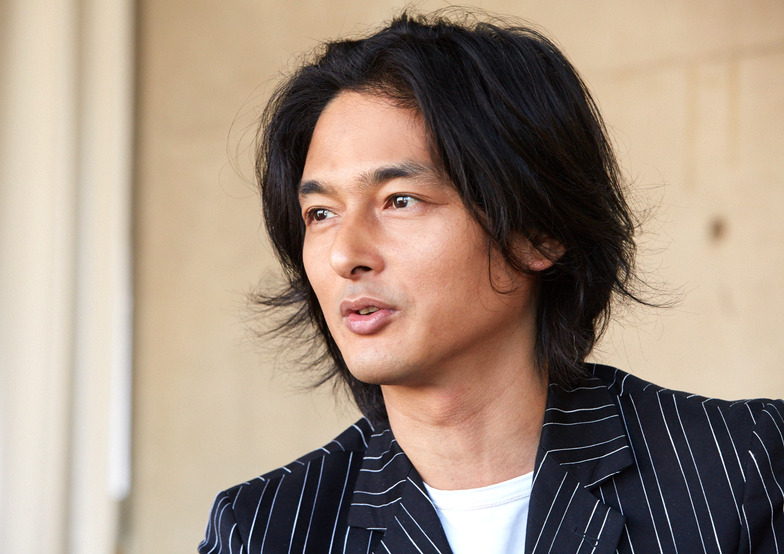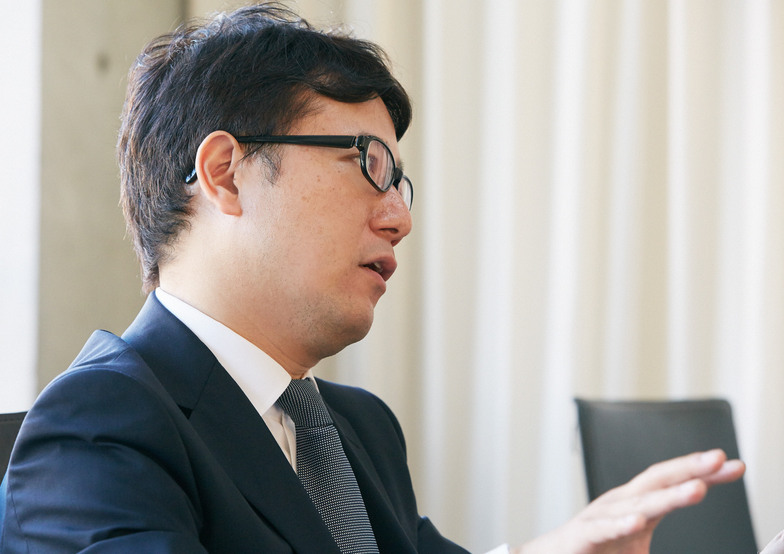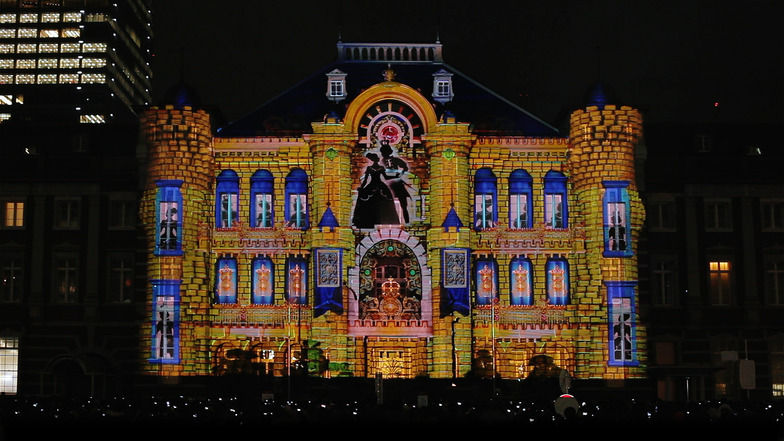The hall event " AQUARIUM BY NAKED - TO THE SEA- " (hereafter referred to as Aquarium), where visitors can experience a sea voyage with all five senses, runs until the end of August. This time, we have a conversation between Ryotaro Muramatsu of NAKED, who produced this innovative event, and Keita Yoneyama of Dentsu Inc.
Interview & Editing: Aki Kanahara, Dentsu Inc. Event & Space Design Bureau
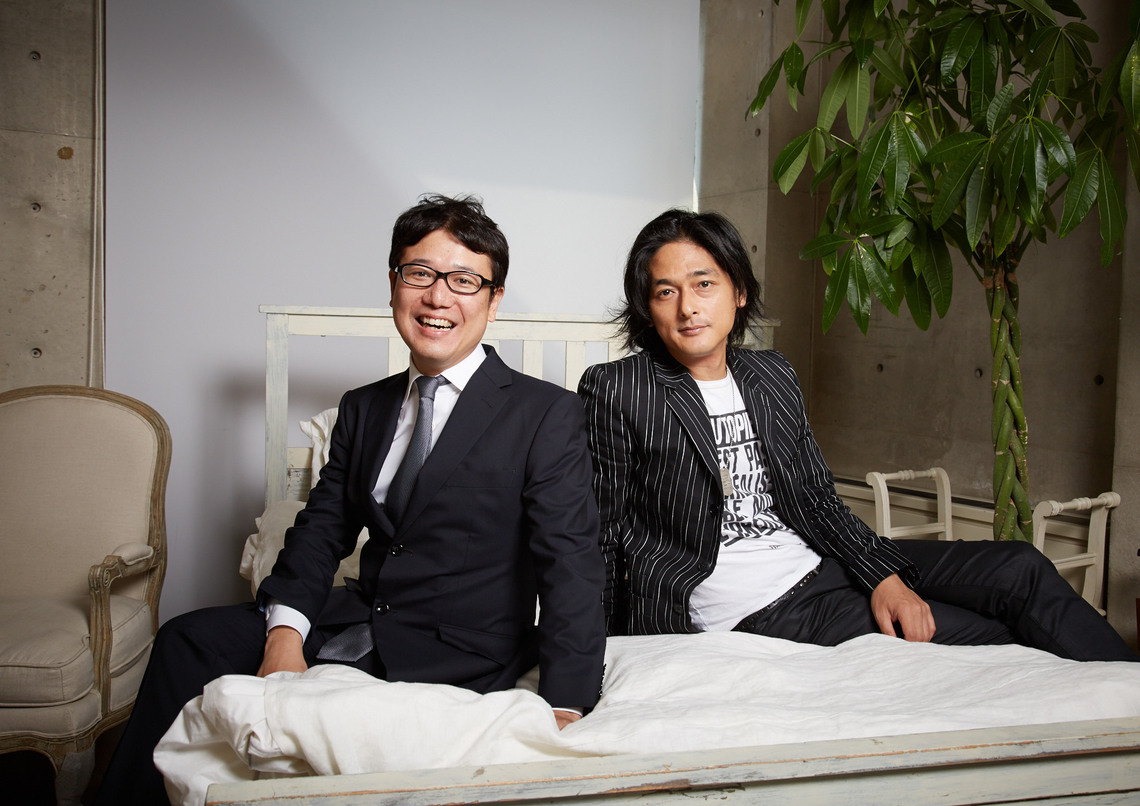
(From left) Mr. Yoneyama, Mr. Muramatsu ※At NAKED Headquarters
The Significance of Technology in Production
Yoneyama: The department I belong to at Dentsu Inc. is called the "Experience Technology Department." Naked's Aquarium incorporates a great deal of technological direction. Mr. Muramatsu, could you tell us about the role of technology in direction?
Muramatsu: Technological expression can certainly be a tool, but it's ultimately like a brush when painting. When creating an event, we don't aim to put on a technology exhibition. Visitors come to enjoy themselves and be moved; they aren't there to gain technical knowledge. So, I consider it just one means of production. I feel a sense of discomfort with the current art scene's overall overemphasis on technology.
Yoneyama: For example, even in opera, projection mapping is now used to visually express what characters are thinking or to show the setting for each scene through imagery (※Reference Column: " Traditional Arts × Cutting-Edge Technology "). I also believe technology should only be used when it provides this kind of essential added value.
Muramatsu: Exactly. If it meant the fundamental brilliance opera has built up over time disappeared, and we just thought "we can manage with technology," that would be completely different, wouldn't it?
Yoneyama: Speaking of building foundations, Naked has created new ways to enjoy Japanese aquariums at places like the New Enoshima Aquarium and Shinagawa Aqua Park. This time, they created an entirely new aquarium. Could you tell us about the production concept and its features?
Muramatsu: When we first did the "Night Aquarium" at Shin-Enoshima Aquarium, we created a new experience for the aquarium. This aquarium is an evolution of that. But with a real aquarium, you just need to think about how to expand the overwhelming appeal of the living creatures. The biggest difference this time was that we had to establish a virtual aquarium in a hall – an empty space. In that sense, you could say it's the culmination of our aquarium events. It's an aquarium without any actual tanks.
Yoneyama: So the idea for Aquarium became about showing things you can't see in a real aquarium. For example, a journey to the deep sea. That's impossible even for divers, and it's a world you can't experience in a regular aquarium. It's a world only possible through imagery.
The Art of Stimulating the Senses
Yoneyama: Since this aquarium project focuses intensely on sensory experiences, I'd like to ask about your commitment to engaging the senses, Mr. Muramatsu. While NAKED is generally seen as a video production company, when I saw "FLOWERS BY NAKED" (hereafter "Flowers") at Nihonbashi Mitsui Hall this past January, I thought NAKED must be a production company.
Yoneyama: There's a book by Frank Hauser, a British director, called "Notes on Directing." Among his 130 notes, he says, "Smell directly stimulates emotion. Music comes next." You can barely tolerate unpleasant music (BGM), but scent stimulates the senses more intensely than music, right? Some animals even get 90% of their information through smell.
Muramatsu: As humans become more intelligent, I actually feel we're progressively degenerating as living beings. The more we rely on cerebral processing, left-brain processing, the more our sensibilities dull, or rather, our five senses lose their freedom. I want to value the primacy of the heart over the brain, this kind of sensory intelligence. That instant feeling when your heart thinks, "Ah, that's nice," happens faster than the brain's understanding, right? I want to flip that switch at that quick moment, before the thinking kicks in. Take art, for example. There's always an explanation written there, right? When you read it and think, "Ah, I see," I get this feeling that makes me question whether you were truly moved by the art at all.
I want to create something that makes you feel "nice" as a sensation, without any rationalization, before your head even understands it. In that context, scent is incredibly effective—or rather, I think it's part of the set. The scent, the music playing, the visuals you take in—it's all part of the set. Things that touch your senses really sink in deeply, so even after it's over, even after you go home, the impression lingers. It's like learning through your skin—it's truly "direct stimulation." We're saying the same thing.
Yoneyama: This book also states, "A properly crafted stage has not a single thing superfluous. Not a single thing lacking." It aligns perfectly with Mr. Muramatsu's work: creating nothing superfluous, yet including everything essential for perception.
Muramatsu: Take dining, for instance. Don't you get fed up when they start with, "This is such-and-such rock salt..." and force it on you? It's natural to feel it simply with your own senses, without having your perspective fixed, and then think, "This is delicious. What is it? What's this aroma?"
Yoneyama: I think Christian churches are also spaces that engage the five senses. Since the Reformation, Christianity has become this intense battle for believers, almost like a marketing war. Using music, paintings—it's like a full-blown campaign.
Churches have paintings, music, incense burning, and sometimes you can even touch statues. It's truly a space experienced through the five senses, a space for evangelism.
Muramatsu: Mosques and temples are the same, right? When trying to convey something beyond logic, it inevitably becomes sensory, doesn't it?
Yoneyama: It's said that J.S. Bach composed new pieces every week for the Sunday Mass, and that believers would go to the churches in Leipzig specifically to hear these new compositions. The Mass itself was also a draw, an event to attract the faithful. What are your thoughts, Mr. Muramatsu, on the power of musical performance?
Muramatsu: The sound at our events is excellent. That's largely influenced by my background in filmmaking; sound is truly like a sound effect to me. For example, when a rock moves, you can't just use a generic "thud" sound like you'd put in a game. The way you create the sound is completely different. While we're building a virtual world, we actually craft the realism of the sound to be on par with film.
The amount of information humans gather as sensors is incredible. Even with artificial intelligence, there are parts robots can never become human. I think that's overwhelmingly the sensory input part of the sensors. So, the key factor is actually physicality. Enjoying with the five senses means maximizing and utilizing that physicality.
Yoneyama: I recall Herbert von Karajan, one of the world's greatest conductors, saying, "Music is the pulse." I love classical music and listen to it daily. Recently, I've begun to understand a bit of what it means to have even your own pulse manipulated.
As Karajan said, it's crucial for a conductor to relax. Apparently, tension diminishes persuasiveness.
Muramatsu: Exactly! Isn't it about how much energy a conductor can move around them?
Bono from U2 also said that true intensity comes from a slightly relaxed state, didn't he?
A Pioneer of Projection Mapping Speaks on Visual Theory
Yoneyama: What are your thoughts on visual and cinematic expression?
Muramatsu: While I believe any tool is worth using, the one I've employed longest as my primary weapon—my own brush—has been moving images. What fascinated me about projection mapping, as someone who had previously made films, was its overwhelmingly different, new appeal: the ability to expand the world beyond the frame. Discovering that potential there was significant.
For example, Japan's film industry is confined within the frame, both in terms of expression and because its business model is too rigidly established, making it difficult to challenge new things. With projection mapping, not only is the image itself unconstrained, but I also feel my own potential isn't confined, which makes the creative process enjoyable. It's less about creating "film" and more about creating the "image" itself.
Yoneyama: Seeing the Tokyo Station projection mapping made me think—where does the balance lie? Surpassing expectations creates wonder, but exceeding them too much leads to dissatisfaction. How do you navigate that range?
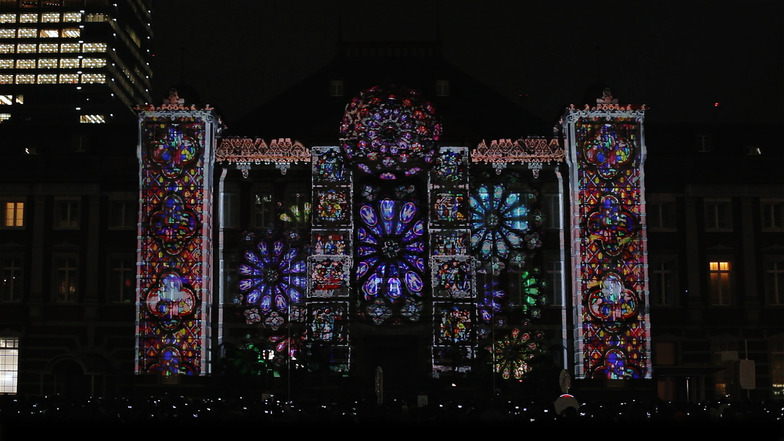
Tokyo Station Projection Mapping © Tokyo Michiterasu 2012 Executive Committee
Muramatsu: What I excel at are very authentic subjects—like nightscapes, flowers, or marine life at aquariums. I present them from a completely new perspective. In a broad sense, I believe the key is storytelling. It's crucial to have a story that fits the location. If it strays from that, it becomes confusing. I feel that narrative quality, in the broadest sense, creates a sense of stability.
(Continued in Part 2)





